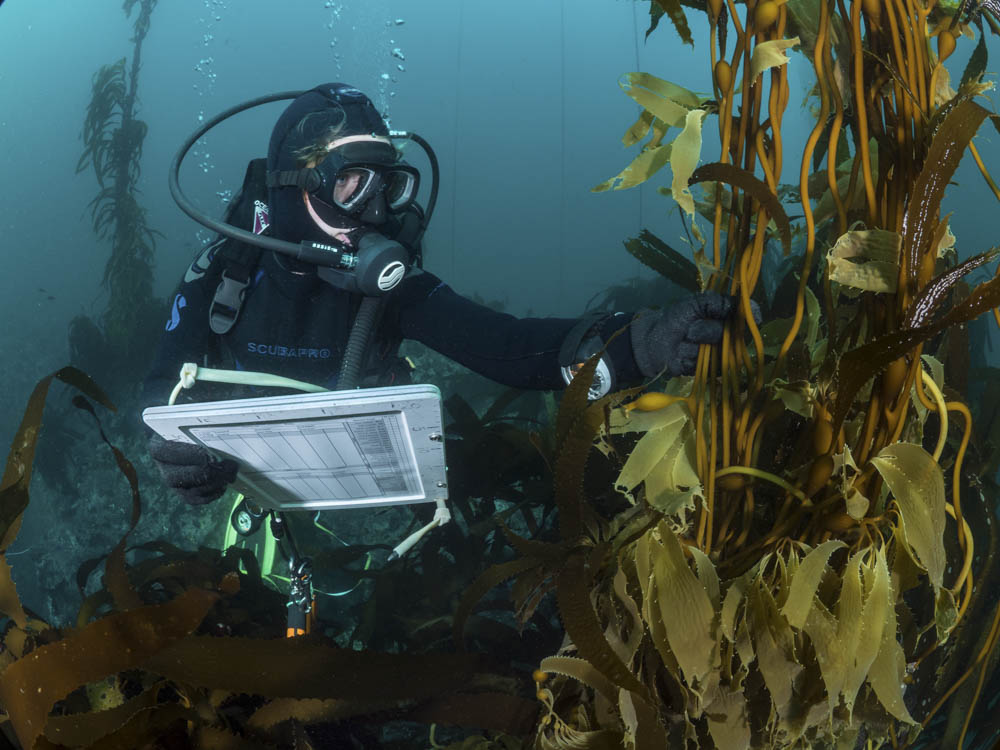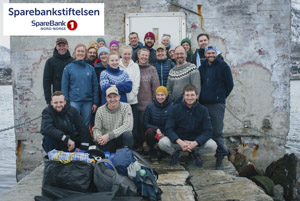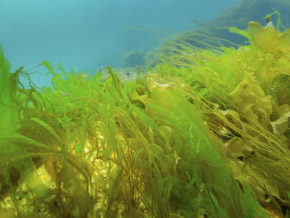There is an understanding of nature’s vast power. The roaring waves, ripping currents, and tidal forces of the endless black/blue expanse are humbling. Yet, the real beauty and testament to the sea’s power and majesty are not so easily seen, for the sea is humble in its aesthetic. Yet, beneath, it hides all its treasures. What lives under the sea is part of a network of ecosystems that sustain life, a collaboration of plant and animal species existing as an orchestra. Part of this network is Kelp.

So, what’s the problem with the kelp?
In its many forms, Kelp makes up the forests of the underwater realm. Ideally, they are a thriving ecosystem acting as food, a safe nursery and hiding place for fish stocks, they also help keep acidification in check. Adding to that, they also absorb a great deal of carbon from the atmosphere. Unfortunately, due to human impact on the marine environment and climate change, these great forests of the ocean are disappearing.
Food! All of us need it, in some form or other, but food choices have ripple effects that can lead to problems. One of the most significant threats to these underwater forests are sea urchins. Sea urchins feed on kelp and can be pretty picky when it comes to which kelp in particular. In Norway, due to the overfishing of wolf fish, the sea urchins’ major predator, there is a severe lack of urchin population control. This has led to an explosion in the sea uchin population, causing what was once vast and diverse underwater forests to morph into urchin barrens.
The other great threat to kelp is the collapse of the Holocene. Climate collapse is causing ocean temperatures to rise, rising far quicker than the kelp can adapt. This creates kelp dead zones, where once-thriving forests have turned to deserts below the surface. The loss of kelp means trouble for ocean inhabitants and those who exist on the terrestrial plane. Kelp is foundational to functioning and diverse ecosystems, and without them, all the other pieces of the puzzle suffer. This includes reducing wild fish stocks and more acidity in the seas. And we miss the crucial carbon absorption they so wonderfully provide.

It’s not over yet
Hope is not lost for these forests. We can step in and be an agent of — positive — change. The protection of coastal zones from fishing and the legal protection of species such as the wolf fish are all things governments could do to formalize protecting these areas. Yet, we can do better. Amongst the oncoming disaster of climate collapse is an energy, a movement of common folk itchy to be boots on the ground and make a difference in this nightmare future we’ve created for ourselves. Teams of ocean lovers, from divers, snorkelers, free divers, kayakers and boaties are coming together to locate these urchin barrens and do away with these predators of kelp. This project has mobilized across many continents and has yielded impressive results. From Norway to California, as the urchins are removed, the kelp comes back. Who knows, maybe we can once again swim in the dense and diverse forests under the sea one day.
Wil Lab and its partners are committed to seeing the kelp forests return in our lifetime. Through our kelp restoration citizen science program, help us remove urchins and monitor the return of kelp and the many species associated with these underwater forests.



